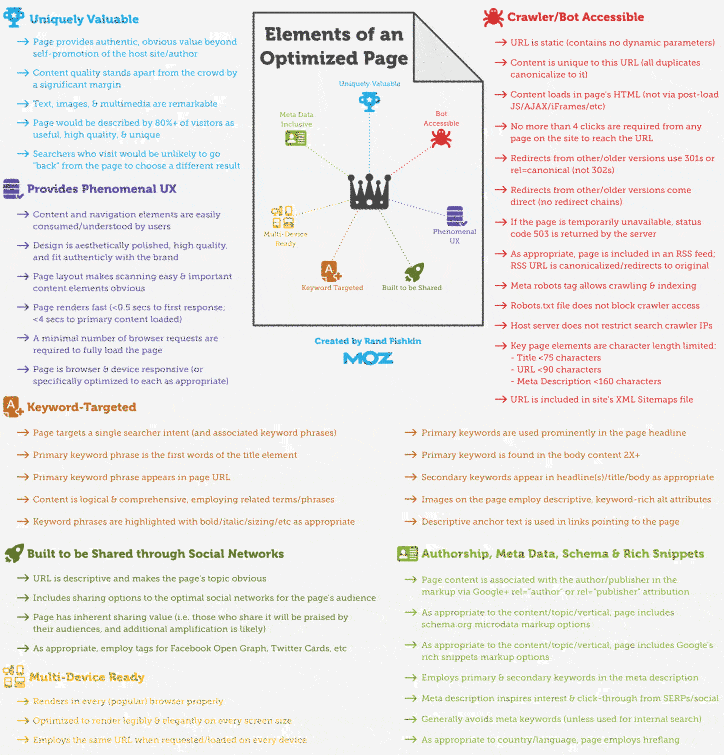What makes a perfectly search engine optimized page in 2013? The first thing you should know is that it’s different than what made a good page in 2012. Google’s algorithms are only gaining momentum year after year, and we’re seeing larger changes come faster than ever before. If you want to succeed moving forward, it’s not enough to rest on your laurels, you need to take those old laurels up, dust ’em off, and get ’em back in the ground to grow for a new season.
You’ll find a lot of “best practices” lists on the web, but a lot of these are written by people who can’t even rank for their own name. When it comes to authority in the industry, there are certain names that just carry more weight, and one of those names is Rand “The Bearded Fish” Fishkin, the founder and CEO of MOZ (formerly known as SEOMOZ.) He has been a respected voice in the SEO community for years, and now he has released a comprehensive cheat-sheet of sorts that shows you exactly what you need to do to optimize a page in 2013. We may argue a point or two, but there’s no denying the overall usefulness of the sheet.
You can see it right below this post, and click it to get a larger version. Before you do though, we want to make one point about the overall theme of this list, and that’s “put the user first.” Google has very nearly accomplished their mission of forcing sites to offer great value to users. To rank in 2013, you need to deliver content the searcher wants in a way that they can use it. If you try to game the system, you will sooner or later fail. When you’re designing pages, think “what would the searcher be looking for?” at every step, and you’ll do just fine.
